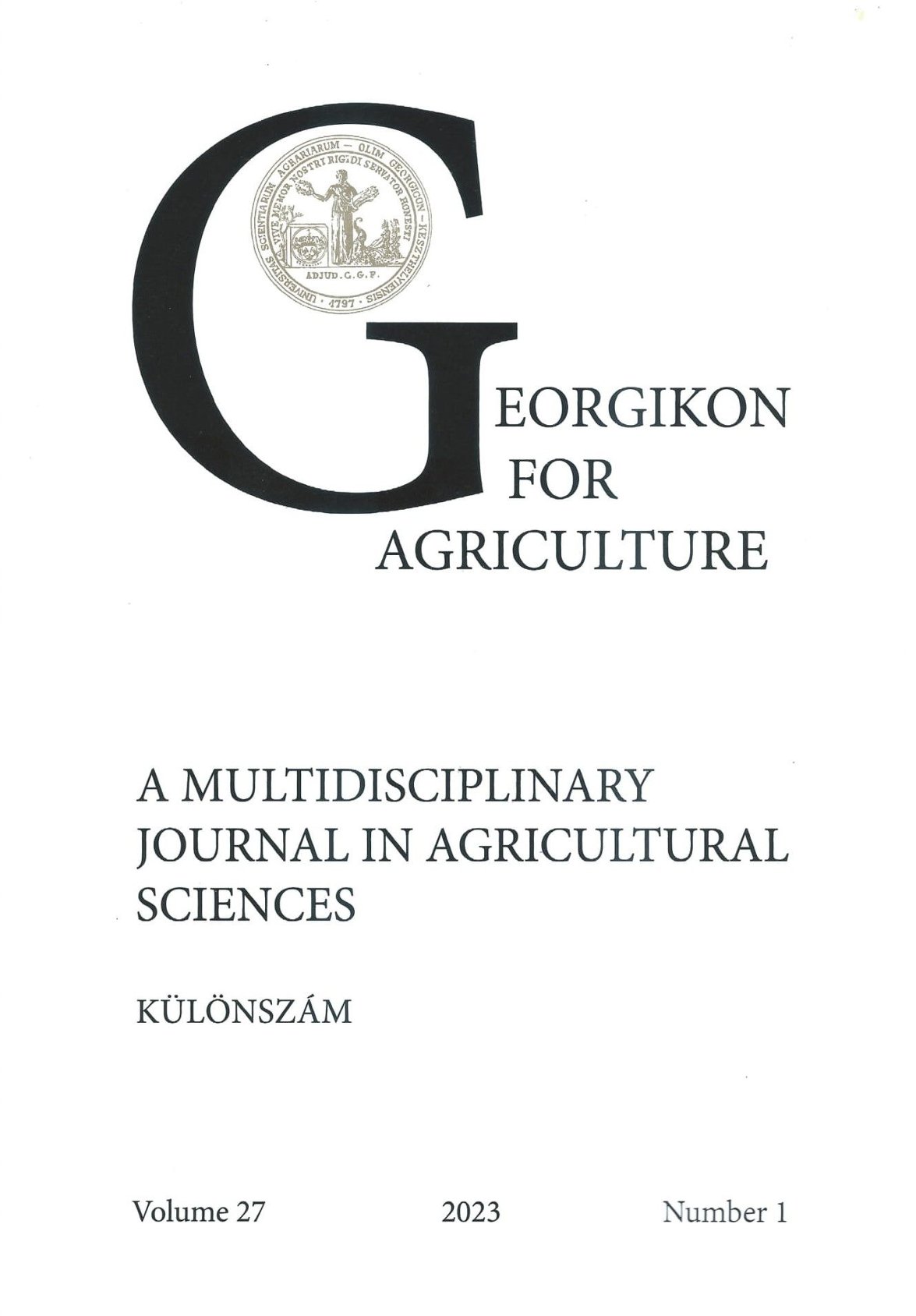Fajtafogékonysági vizsgálat a leanderrák kórokozójával szemben
Keywords:
Nerium oleander, Pseudomonas savastanoi pv nerii, susceptibility, plant protectionAbstract
One of the most important pathogens of oleander is Pseudomonas savastanoi pv. nerii, which causes leander cancer. Unfortunately, there is only few information about protection options against this disease. Infected plants are most often treated with copper-based pesticides, but this can cause environmental pollution. Using resistant variety is a chemical-free and environmentally friendly way of protection. In our study, we tested the susceptibility of 11 oleander varieties. The investigated varieties reacted differently to the infection. The most serious symptoms were observed in the variety N. oleander 'Marie Gambetta', the smallest changes were observed in the varieties N. oleander 'Maglay' and N. oleander 'Roseum plenum'.
References
Azad, H. R. and Cooksey, D. A. 1995. A selective medium for detecting epiphytic and systemic populations of Pseudomonas savastanoi from oleander. Phytopathology 85(7). 740-745.
Bella, P., Catara, V., Guarino, C. and Cirvilleri, G. 2006. Evaluation of oleander cultivars for resistance to Pseudomonas savastanoi pv. nerii. Journal of Plant Pathology 88(3). 273-278.
Fodor A. 2020. Tények a leanderrákról hazánkban. Szent István Egyetem, Budapest, Diplomamunka
Fodor A., Palkovics L., Juhász Á. és Végh A. 2022. A leanderrák kórokozójának, a Pseudomonas savastanoi pv. nerii baktériumfaj izolátumainak azonosítása és összehasonlítása hazánkban. Georgikon for Agriculture 26(1). 219-231.
Lavermicocca, P., Lonigro, S. L., Valerio, F., Evidente, A. and Visconti, A. 2002. Reduction of olive knot disease by a bacteriocin from Pseudomonas syringae pv. ciccaronei. Applied and Environmental Microbiology 68(3). 1403-1407.
Quesada, J. M., Penyalver, R., Pérez-Panadés, J., Salcedo, C. I., Carbonell, E. A. and López, M. M. 2010. Comparison of chemical treatments for reducing epiphytic Pseudomonas savastanoi pv. savastanoi populations and for improving subsequent control of olive knot disease. Crop Protection 29. 1413-1420.
Smith, E. D. 1908. Recent studies of the olive tubercule organism. Bull. Bur. Plant Ind. U. S. Department of Agriculture. 2543.
Szabó Á. 2017. A sokarcú réz - nélkülözhetetlen mikroelem, szennyező nehézfém, fontos hatóanyag. Agroinform online https://www.agroinform.hu/szantofold/a-sokarcu-reznelkulozhetetlen-mikroelem-szennyezo-nehezfem-fontos-hatoanyag-32010-001
Downloads
Published
Issue
Section
License
Copyright (c) 2023 Fodor Attila, Vitári Viktória, Végh Anita

This work is licensed under a Creative Commons Attribution-NonCommercial-NoDerivatives 4.0 International License.
Cikkre a Creative Commons 4.0 standard licenc alábbi típusa vonatkozik: CC-BY-NC-ND-4.0. Ennek értelmében a mű szabadon másolható, terjeszthető, bemutatható és előadható, azonban nem használható fel kereskedelmi célokra (NC), továbbá nem módosítható és nem készíthető belőle átdolgozás, származékos mű (ND). A licenc alapján a szerző vagy a jogosult által meghatározott módon fel kell tüntetni a szerző nevét és a szerzői mű címét (BY).




